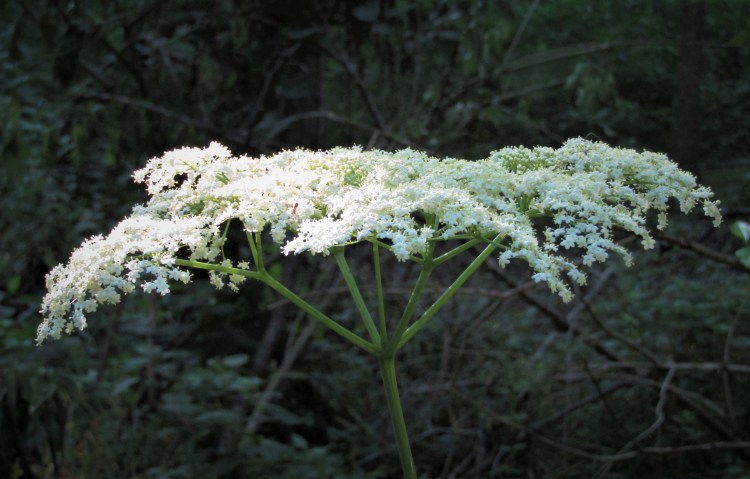
….is where the light is. Though I’ve spent much of my life outdoors, especially in forests, there are plenty of things I failed to notice until a forest became my workplace. “Gap dynamics” is one of them; the process by which the forest continually renews itself as old trees die. A light-filled gap is a lively place in the midst of a forest’s somber shade. Full of Jewelweed and other summer blooms, it’s a meetup zone for pollinating insects and those that prey on them. In this forest, the presence of a vigorous blooming Elderberry bush, Sambucus canadensis, always signals a gap. Many little Elderberry shoots spring up throughout the moist floodplain, but only the ones in sunlight can grow fast enough to escape the deer.
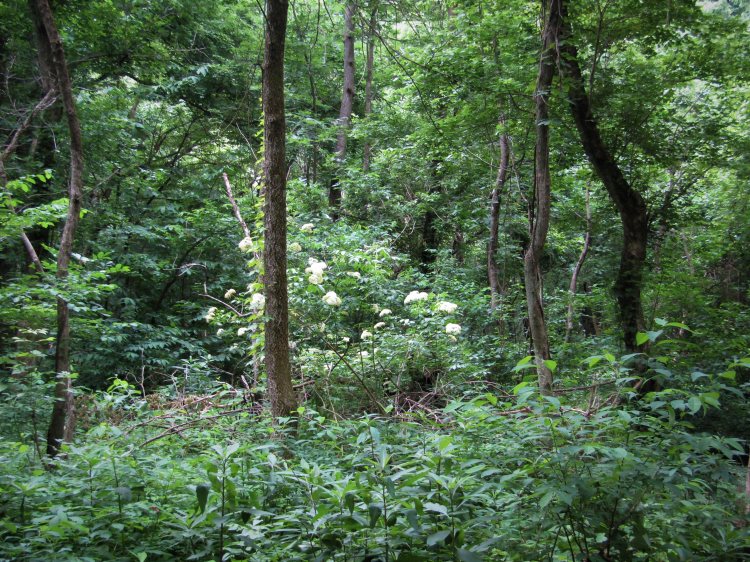
Gap dynamics as a field of study has generated a lot of research in the last few decades. As forest stands become more complex due to logging, fragmentation, invasive plants, and dieoffs from pathogens like EAB (Emerald Ash Borer) – there is more to study and learn from. I have been conducting my own anecdotal research in this forest, and have noted there is an optimum light level for many native forbs, shrubs and trees. And it’s often a good bit higher than that required by invasive plants like Bush honeysuckle, Privet, and Wintercreeper. Meaning, somewhat counter-intuitively, that a shady urban forest tends to favor the establishment of invasive plants over natives in many cases!
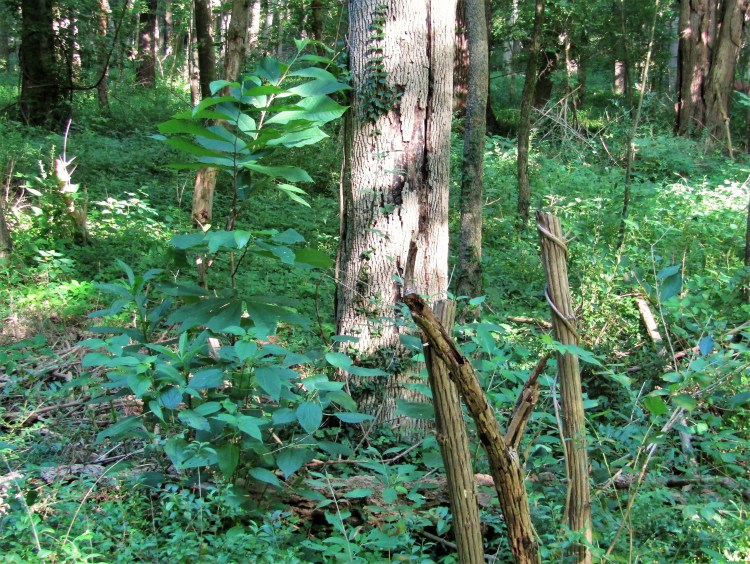
Beargrass Creek SNP is a prefect laboratory for this kind of investigation, as it’s in the process of changing from a rather dark and gloomy place, to a forest filled with sunny gaps. Of course, invasive plant removal is responsible for a lot of this, but just as significant has been the decimation of all the old ash trees by EAB. The pic above is a good example – in the foreground are the dead remains of a large Bush honeysuckle, behind it a dead ash tree. Beside the ash tree stands a young Pawpaw tree, Asiminia triloba, so nice to see. Pawpaw is a gap-adapted species that waits in the shade for trees to fall. With enough sunlight, a single Pawpaw tree will go into overdrive and produce an abundance of clonal “ramets” – the proverbial Pawpaw patch. Only the largest Pawpaw trees in a patch, with access to the most sun, will produce fruit.
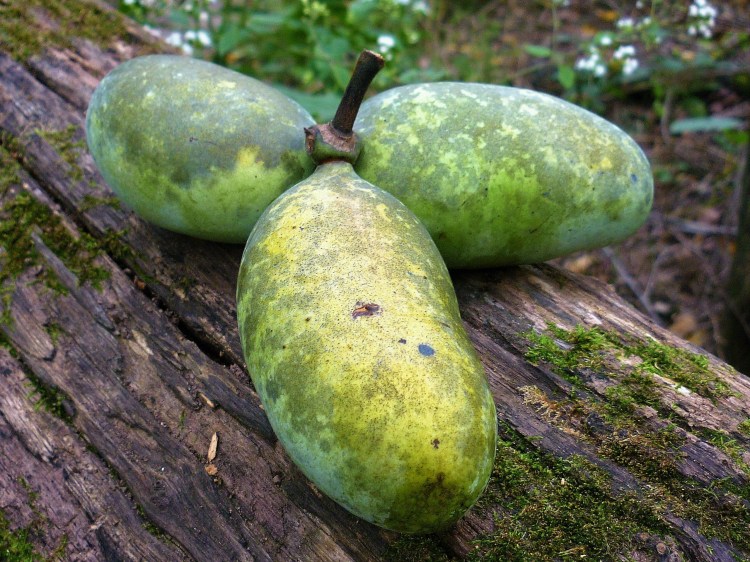
My favorite shrub, Spicebush Lindera benzoin, has a similar growth pattern. It can grow happily in moderate, and even deep shade; but will produce few or no berries if there’s not enough sunlight. Though known as a shade-loving shrub, it has the best berry production in light shade to almost full sun – allowing it to quickly populate gaps and clearings. With its faster growing competitor Bush honeysuckle suppressed, this shrub is making an amazing comeback in the forest.

“Suppressed” is the key word when it comes to managing the revival of native plants here. Competiton is most intense where the light is, and in a weedy urban forest it’s astounding how fast any gap can fill with invasive plants. Keeping them suppressed (they will never be gone) allows the slower growing native plants to establish, and hopefully close the gap over time with their shade.
As we pass the long days of the solstice, some observations on life in a forest gap, where….

…I threw down some Bee Balm seeds and three years later there’s a blooming patch
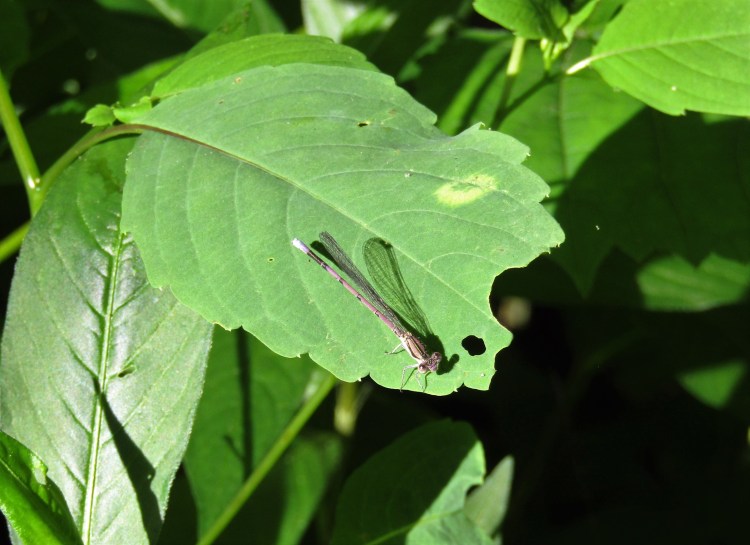
…a damselfly perches on a Jewelweed leaf

…a young Tulip tree angles its leaves toward the sun

…Smilax tendrils reach for a branch to climb

…Black raspberries ripen
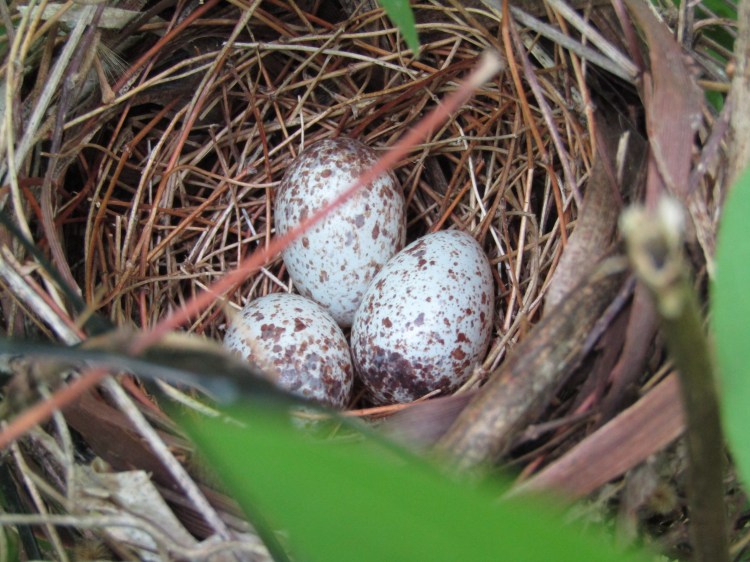
..a cardinal has a nest tucked away in dense undergrowth
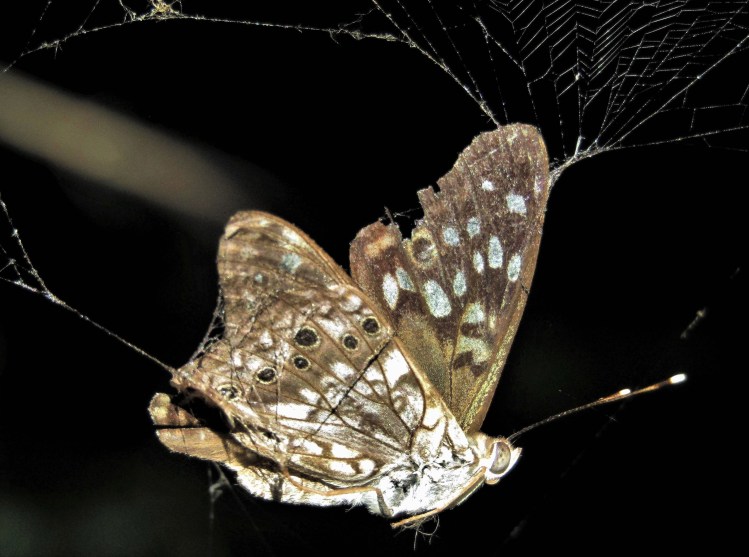
a Hackberry Emperor butterfly, Asterocampa celtis, becomes a spider’s meal

Deany C.
Love reading your articles and learning through you! Love seeing the bee balm! I can’t wait to get Spicebush and Pawpaw started here. After reading your article, I will have to take a hike through the forest. : )
LikeLiked by 1 person
oneforestfragment
Thank-you Deany! Please do take a hike – particularly on the red trail, native plant revival is going well.
LikeLike
Conrad Selle
Putting up a tree protector tomorrow on a yellow poplar in section 4. Expensive business at $40 a 50 foot roll and two good T posts and 2 scavenged one. But a 20 foot tree in a few years will be worth it. Sunday Andrew is to come at 7:30. Serious gains are being made.
________________________________
LikeLike
tonytomeo
There is still so much controversy about the elderberries. I sill like to believe that yours is Sambucus canadensis, but some would insist that it is variety of the Sambucus nigra from Europe and Asia. Supposedly, our blue elderberry is too, but I am not buying it. Yet, even then, I do not know if it is Sambucus cerulea or Sambucus mexicana. That is an impressive floral truss. Ours finished bloom a while ago.
We have no paw paw here, but I intend to grow some. Clients who have grown them do not like the fragrance of the bloom, but mine will be out of the way.
LikeLiked by 1 person
oneforestfragment
I didn’t realize there was taxonomic debate over Sambucus, but it’s not surprising for such a widespread genus. Sounds like the taxonomic “lumpers” have been busy. There are certainly a lot of opportunities for reclassifying things with all the genetic analysis.
Pawpaw is amazing, part of a mostly tropical genus, and really looks like it. The flowers bloom very briefly, but do smell funky since they are adapted to attract flies.
LikeLiked by 1 person
tonytomeo
I gave up with trying to identify mine. I just consider it to be Sambucus caerulea. It works so well here that I will not bother trying to procure an Eastern black elderberry unless one just happens to come along.
LikeLiked by 1 person